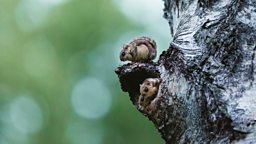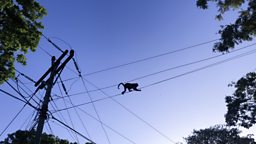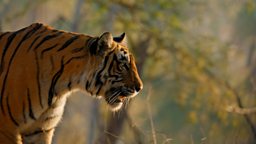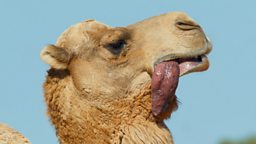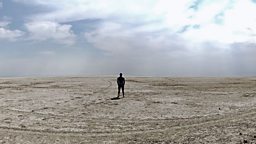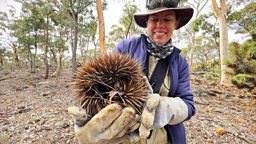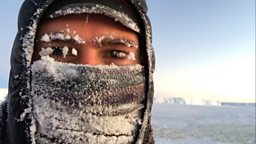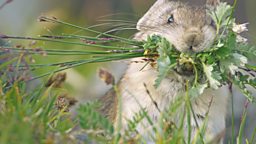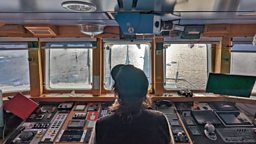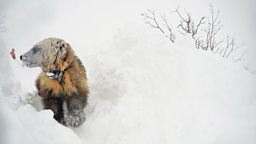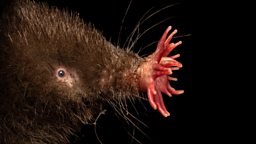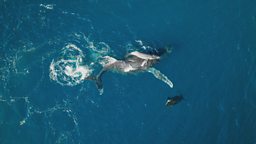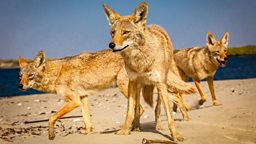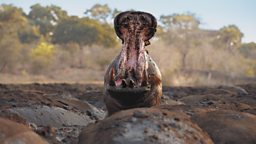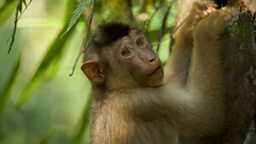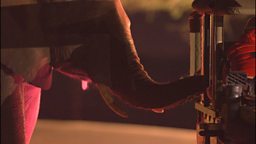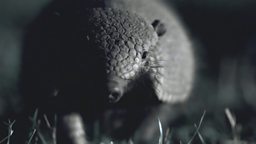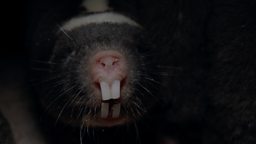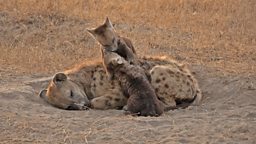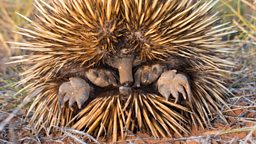Surprise footage reveals the voice of one of nature’s weirdest mammals
By Mammals Assistant Producer, Lillian Todd-Jones
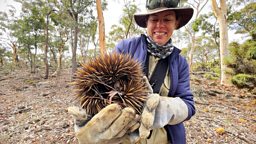
Somewhere in Western Australia the spikey backside of an echidna is disappearing into a bush. This is disappointing to cameraman Nick Ball and I because we’ve spent all afternoon looking for this creature. “Yep, you’ve got no chance of catching up with that one” Dr. Christine Cooper’s voice crackles cheerfully over the radio.
“Yep, you’ve got no chance of catching up with that one”
The world-renowned echidna expert is watching from a hundred yards away and despite her positivity, the echidna is gone.
Echidnas are silent, hot water bottle sized mammals that don’t seem to have gotten the memo about doing all the things mammals are supposed to. They lay eggs like a reptile.
They sense electrical fields through their snout like a shark. And, in mating season the males follow females around in a queue before deploying a four-pronged penis, like… well, I don’t know if anything else does that. The reason Nick and I are so sad to see the back of one is because we’re trying to film echidna mating behaviour for Mammals and it is proving rather difficult.
Part of the challenge is that the echidnas forest home is relentlessly serene. Eucalyptus trunks glow pearly-white in the morning sun. A breeze lifts sparkling threads of spider’s silk woven through the leaf-litter.
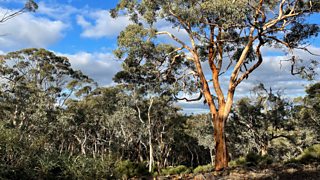
Birds chirp in a polite, quiet kind of way. But the peace is shattered the moment we step off the path. Inches of dried eucalyptus leaves crunch so loudly underfoot that sneaking up on an echidna is an art in itself.
They don’t seem too bothered by the sight of people, but the sound of footsteps makes them curl up in a ball and stop what they are doing. So, Nick hops delicately from rock to fallen log in a ‘the floor is lava’ type manner. Me and Dr. Cooper wait at a distance. I’m watching my directors’ monitor nervously.
Christine is beaming supportively at the echidna. We’re in luck: a female is waddling along with three males in tow. She seems supremely un-interested in her line of suitors and manages to give them the slip in a maze of waist-high bushes.
Nick shifts himself to get a better view. This time the amorous males, make a beeline for Nick, mistaking his scuffles for their lost female. They burst out of the undergrowth at his feet, only to realize their mistake and turn back to find their lady love.
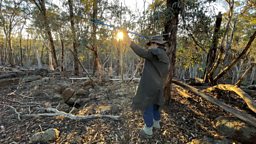
Nick manages to capture several nice shots before the love train waddles once again too deep into the undergrowth to follow.
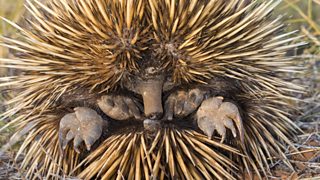
Our next step is to find out what the echidnas get up to when we are not around.
Dr. Cooper takes us to the entrance of a cave where she has tracked a radio-tagged individual; only yesterday we saw an extremely large and venomous king brown snake here. Nick tentatively gets flat on his stomach to look inside. “There are some perfect holes to see right into the burrow!”. Nick carefully deploys a network of cameras and we leave with our fingers crossed.
In true wildlife TV fashion, it’s on the very last day that our remote cameras capture something we never expected. The burrow erupts into snuffling and scraping as three echidnas squeeze into view. And there is another sound: a gentle cooing. It’s evidence that – contrary to popular belief – echidnas DO make a noise!
Dr. Cooper uses the footage as part of a scientific paper to set the record straight. Echidnas go “coo”.
By being patient, persistent and quiet we were able to show intimate details of the lives of echidnas: in listening we heard a voice we never expected.
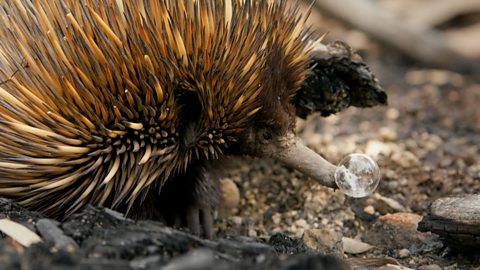
How echidnas survive Australian bushfire
How echidnas unique survival skills help them to survive intense forest fires.

